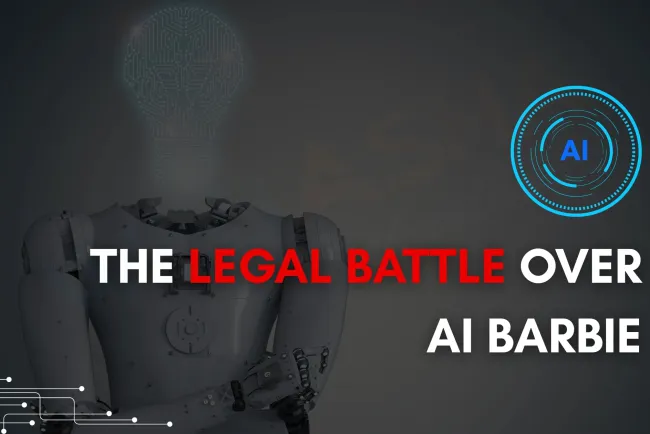Are We Too Dependent on Technology? Signs You Might Be Addicted and How to Regain Control
Technology makes life easier, but overuse can lead to addiction, anxiety, and disconnection from reality. This blog explores the psychological and behavioral signs of tech addiction, its impact on health and productivity, and offers practical strategies to break the cycle. Learn how to find a healthy balance between digital convenience and real-world connection to regain focus, improve mental well-being, and lead a more mindful life.

Table of Contents
- Why Are We So Dependent on Technology?
- Signs You Might Be Addicted to Technology
- Comparison of Healthy vs. Addictive Tech Use
- The Psychology Behind Tech Addiction
- Are Certain Technologies More Addictive Than Others?
- When Does Use Turn into Addiction?
- How to Break Free from Technology Addiction
- The Role of Parents and Educators
- Conclusion
- Frequently Asked Questions (FAQs)
In today's digital world, technology is not just a tool—it’s a lifestyle. From smartphones and laptops to smart TVs and voice assistants, technology has made life more convenient, but also more consuming. This raises a critical question: Are we too dependent on technology? And more importantly—could we be addicted without realizing it? In this blog, we explore the signs of tech addiction, its effects, and how to strike a healthy balance.
Why Are We So Dependent on Technology?
Technology offers comfort, efficiency, and instant gratification. Whether it's ordering food, working remotely, or chatting with friends worldwide, our lives revolve around digital convenience. This dependence has grown with:
-
24/7 connectivity
-
Work-from-anywhere culture
-
Social media integration into daily life
-
AI and automation in household tasks
But with great access comes great risk—especially when dependence turns into compulsion.
Signs You Might Be Addicted to Technology
Technology addiction isn’t always obvious. It doesn't look like substance abuse, but the patterns can be just as harmful. Here are common signs:
1. Constant Need to Check Devices
Do you check your phone the moment you wake up or feel anxious when it's out of reach? This could indicate a dependency.
2. Declining Real-World Social Interactions
If you find yourself avoiding real-life conversations or social outings in favor of screen time, it’s a red flag.
3. Mood Swings When Offline
Irritability, restlessness, or boredom when you're disconnected is a classic sign of withdrawal.
4. Neglecting Responsibilities
Missing deadlines, skipping chores, or losing productivity due to excessive screen time signals deeper issues.
5. Physical Symptoms
Eye strain, poor posture, disrupted sleep, and headaches may result from prolonged screen use.
6. Using Technology to Escape Emotions
Do you binge-watch, scroll, or game to avoid stress, sadness, or anxiety? This coping mechanism can mask emotional struggles.
Comparison of Healthy vs. Addictive Tech Use
| Behavior | Healthy Tech Use | Addictive Tech Use |
|---|---|---|
| Screen Time | 2–4 hours/day (balanced with other activities) | 8+ hours/day, ignoring other obligations |
| Purpose of Use | Productive, educational, communication | Escapism, procrastination, compulsive scrolling |
| Emotional Response Without Tech | Calm, normal | Anxiety, irritation, mood swings |
| Sleep Impact | Tech off before bed, restful sleep | Screens in bed, disrupted sleep cycle |
| Social Interaction | Real-world interactions prioritized | Isolation, more online than offline engagement |
The Psychology Behind Tech Addiction
Technology activates the brain’s reward system—especially through likes, notifications, or leveling up in a game. Dopamine spikes drive repeated behavior. Over time, this trains the brain to crave constant digital stimulation, similar to how gambling or junk food affects us.
How Tech Dependency Affects Mental Health
-
Increased anxiety and depression
-
Reduced attention span
-
Decreased self-esteem (especially via social media)
-
Sleep disorders
-
FOMO (Fear of Missing Out)
Excessive digital use can create a false reality and disconnect us from meaningful human experiences.
Are Certain Technologies More Addictive Than Others?
Yes. Social media platforms, gaming apps, video streaming, and instant messaging are designed to keep you engaged. Features like infinite scroll, autoplay, and reward points feed the addiction loop.
When Does Use Turn into Addiction?
Using technology is not inherently bad—it's excessive, uncontrolled use that becomes problematic. Ask yourself:
-
Can I stop when I want to?
-
Does tech use affect my work, health, or relationships?
-
Do I feel anxious without it?
If the answer to most of these is yes, it may be time to reevaluate your habits.
How to Break Free from Technology Addiction
1. Set Tech-Free Zones
Designate bedrooms or dining areas as screen-free to encourage real-world interaction.
2. Use Screen Time Trackers
Monitor and limit your digital use with apps like Digital Wellbeing or Screen Time.
3. Schedule Downtime
Plan offline activities—reading, exercising, or spending time outdoors—to reconnect with reality.
4. Turn Off Non-Essential Notifications
Disabling unnecessary alerts reduces distractions and compulsive checking.
5. Try a Digital Detox
Unplug for a day or weekend to reset your mental health and assess how you feel.
The Role of Parents and Educators
Children and teens are especially vulnerable. Adults must model healthy tech habits, enforce screen time limits, and encourage offline hobbies. Schools should integrate digital literacy and wellness into curricula.
Conclusion: Technology Should Empower, Not Control
We’re not suggesting you ditch your smartphone and live in the woods. Technology is a powerful tool—but it should serve you, not enslave you. Recognizing the signs of addiction and making conscious changes can restore balance in your life.
Start small. Reclaim your time, energy, and attention—and experience the richness of life beyond the screen.
FAQs
What are the signs that you're addicted to technology?
Common signs include excessive screen time, irritability without devices, neglect of daily responsibilities, disrupted sleep, and social withdrawal.
How does technology addiction affect mental health?
It can lead to anxiety, depression, low self-esteem, sleep disturbances, and attention deficits.
Is technology addiction a real disorder?
While not always officially diagnosed, technology addiction is recognized by mental health professionals as a behavioral issue with real consequences.
What causes technology addiction?
Reward systems like dopamine release from notifications, social media validation, and instant gratification all contribute to tech addiction.
How can I check if I’m addicted to my phone?
Ask yourself if you feel anxious without it, use it as a coping tool, or spend more time online than intended.
Can kids and teens get addicted to technology?
Yes, younger users are especially vulnerable due to developing brains and lack of self-regulation skills.
What are healthy tech habits?
These include setting time limits, turning off notifications, using screen-time tracking apps, and engaging in offline hobbies.
What’s a digital detox?
It’s a conscious break from screens—often for a day or weekend—to reset habits and mental health.
Is social media more addictive than other technologies?
Yes, due to algorithms designed to maximize engagement, instant feedback, and emotional triggers.
How does technology affect sleep?
Blue light from screens disrupts melatonin production, making it harder to fall and stay asleep.
Can excessive tech use impact productivity?
Yes, constant notifications, multitasking, and digital distractions reduce focus and efficiency.
What is FOMO and how is it related to tech?
Fear of Missing Out (FOMO) is driven by social media, leading users to compulsively check updates and compare themselves to others.
Can technology use become a coping mechanism?
Yes, many people use devices to escape emotional distress, which can mask deeper mental health issues.
What are some offline activities to reduce screen time?
Reading, walking, exercising, socializing face-to-face, art, and nature-based activities are effective.
Should I turn off notifications?
Yes, it reduces distractions and helps regain control over your attention and time.
What are tech-free zones?
These are physical spaces like bedrooms or dining areas where screens are not allowed to promote real interaction.
Can wearable tech also cause dependency?
Yes, constant alerts and health metrics can lead to obsession or anxiety in some users.
What apps help track screen time?
Apps like Digital Wellbeing, Screen Time, Forest, and Moment are useful tools for monitoring and limiting usage.
Is multitasking with technology bad?
Yes, it often reduces overall focus and productivity rather than enhancing it.
Can technology addiction affect relationships?
Absolutely, it can cause miscommunication, emotional disconnect, and reduced quality time with loved ones.
Are there therapists for tech addiction?
Yes, behavioral therapists and digital wellness coaches specialize in addressing screen addiction.
What’s the difference between use and overuse?
Use is intentional and limited; overuse is compulsive and uncontrolled, often leading to negative consequences.
Can meditation help with digital dependency?
Yes, mindfulness techniques like meditation can improve awareness and reduce compulsive digital behavior.
What is nomophobia?
It’s the fear of being without your phone—an increasingly common symptom of tech dependence.
How can parents prevent tech addiction in kids?
By setting screen time rules, modeling healthy behavior, and encouraging creative offline play.
Does working from home increase tech dependence?
Often, yes. The blending of work and home life leads to more screen exposure and digital fatigue.
Are gaming and tech addiction related?
Yes, excessive gaming is one of the most prevalent forms of tech addiction, especially in younger users.
Can turning on grayscale reduce screen addiction?
Yes, removing color stimulation can make screens less engaging and reduce compulsive use.
How long should a digital detox last?
Even a few hours or a weekend can help reset your brain and build healthier habits.
Is technology always bad?
No, it’s how and how much we use it that determines its impact—technology can empower or control depending on usage patterns.














![Top 10 Ethical Hackers in the World [2025]](https://www.webasha.com/blog/uploads/images/202408/image_100x75_66c2f983c207b.webp)








